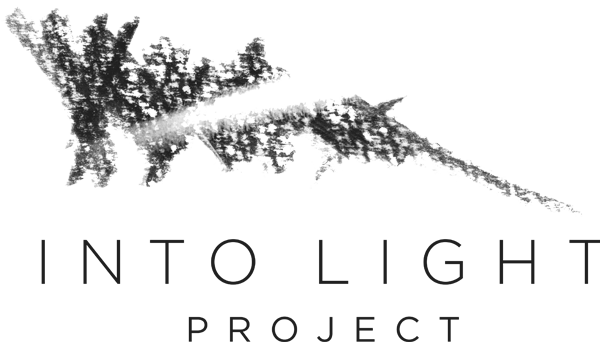Dear Facilitator:
Thank you for acting as a facilitator for this exhibit. The INTO LIGHT Project interactive facilitator guide is designed to guide discussion with your group. Please read through the guide in advance to become familiar with the various questions and prompts. Facilitator prompts are italicized and underlined. Not all prompts will be used with every group, you may wish to mark ones appropriate to your group and the time you have allotted for exploration of the exhibit.
The exhibit and the reverential way we present it are intentional. Many of the individuals presented here did not get the respect or understanding that they deserved in life because of their disease. Instead, they, and their families, were met with stigma, shame, criticism, and rejection. It is the goal of INTO LIGHT to change the conversation about drug addiction by humanizing those with substance use disorders and reducing stigma. We want those who enter the exhibit to be respectful in their approach and aware that families have shared their loved ones’ faces and stories in order to educate others about the disease of addiction. It is important to them that their loved ones be valued and appreciated.
Thank you,
INTO LIGHT Project
The INTO LIGHT Project Facilitator Guide can be customized for use with any group of people touring the Drug Addiction: Real People, Real Stories exhibition.
** Content Warning:This exhibition contains original hand drawn portraits and accompanying life stories of those who have died from drug addiction or drug poisoning. Quiet space outside the gallery is available if needed. (Facilitator–check with administration about location of quiet space.)
This is an exhibit first of the heart and emotions, it humanizes those who have lost their struggle with addiction to drugs/and those who have died from drug poisoning. The goals of the exhibit are to:
Facilitators, your responsibility as leader of the exhibit is to set the tone for the exhibit. Some ways that you can achieve this is via the following:
Some prompts you can use are:
Some prompts you can use are:
Facilitators, the intent of the slow looking exercise below is to promote Group Discussion.
• Each participant chooses one portrait/story with which they identify. (participant can take notes if desired)
• Ask: "Study their face, look at each pencil stroke. Look into their eyes. What is revealed to you about this human being?"
What are your thoughts after reading their story?
• "Were they like others you know with or without an addiction? "
• "How are they the same or different? "
• "How do you feel about them?"
• "How do you feel about them?
What do you think they felt about themselves?"
Encourage the participants to think about their family and friends. Ask questions such as:
• "What are your thoughts about their family?"
• "How do you think their family felt having someone they loved with an addiction or who died from drug overdose/poisoning?"
Facilitators, the following are a list of additional group discussion questions with suggested things to discuss.
Donations support the work of The INTO LIGHT Project to produce our exhibit, Drug Addiction: Real People, Real Stories. We bring awareness to substance use disorder (SUD) as a brain disease, help to change the conversation about drug addiction, and work to erase the stigma and shame associated with it.
Support